Volume 5, Issue 2
Displaying 1-15 of 15 articles from this issue
- |<
- <
- 1
- >
- >|
-
2020 Volume 5 Issue 2 Pages 81
Published: April 30, 2020
Released on J-STAGE: June 05, 2020
Download PDF (126K) -
2020 Volume 5 Issue 2 Pages 83-91
Published: April 30, 2020
Released on J-STAGE: June 05, 2020
Download PDF (1024K) -
2020 Volume 5 Issue 2 Pages 93-99
Published: April 30, 2020
Released on J-STAGE: June 05, 2020
Download PDF (651K) -
2020 Volume 5 Issue 2 Pages 101-108
Published: April 30, 2020
Released on J-STAGE: June 05, 2020
Download PDF (2608K) -
2020 Volume 5 Issue 2 Pages 109-114
Published: April 30, 2020
Released on J-STAGE: June 05, 2020
Download PDF (733K) -
2020 Volume 5 Issue 2 Pages 115-121
Published: April 30, 2020
Released on J-STAGE: June 05, 2020
Download PDF (1278K)
-
2020 Volume 5 Issue 2 Pages 123-132
Published: April 30, 2020
Released on J-STAGE: June 05, 2020
Download PDF (642K) -
2020 Volume 5 Issue 2 Pages 133-139
Published: April 30, 2020
Released on J-STAGE: June 05, 2020
Download PDF (663K) -
2020 Volume 5 Issue 2 Pages 141-149
Published: April 30, 2020
Released on J-STAGE: June 05, 2020
Download PDF (1567K) -
2020 Volume 5 Issue 2 Pages 151-157
Published: April 30, 2020
Released on J-STAGE: June 05, 2020
Download PDF (725K) -
2020 Volume 5 Issue 2 Pages 159-163
Published: April 30, 2020
Released on J-STAGE: June 05, 2020
Download PDF (654K) -
2020 Volume 5 Issue 2 Pages 165-169
Published: April 30, 2020
Released on J-STAGE: June 05, 2020
Download PDF (711K) -
2020 Volume 5 Issue 2 Pages 171-177
Published: April 30, 2020
Released on J-STAGE: June 05, 2020
Download PDF (813K)
-
2020 Volume 5 Issue 2 Pages 179-184
Published: April 30, 2020
Released on J-STAGE: June 05, 2020
Download PDF (597K) -
2020 Volume 5 Issue 2 Pages 185-189
Published: April 30, 2020
Released on J-STAGE: June 05, 2020
Download PDF (467K)
- |<
- <
- 1
- >
- >|
